Power-pylons That Look Like Looming Giants
Power-pylons that look like looming giants


Choi + Shine, an architecture firm, has proposed modifying Iceland’s existing power-transmission pylons to turn them into looming giants whose arms are poised to reflect their positions – pylons ascending a hill will be posed as though they were scaling its slopes.
The designers claim that it can be made cost-effective through clever engineering, and that the resulting aesthetic experience will be monumental. I agree with the latter statement and am unqualified to assess the former, though Iceland has a weird and cool relationship with power, as it is ia carbon-neutral country whose electricity comes from geothermal sources.
Read the rest
More Posts from Dotmpotter and Others

Tinysaur, Tiny Dinosaur Fossil Models You Can Build Yourself
This Week in Social Entrepreneurship: Weh Yeoh tells us who sets the international development agenda (hint: it's you!)
Come out for the NY+Acumen Happy Hour and Jeopardy Night Wednesday night, October 16th. It will be an exciting evening at Galway Pub where all questions (errr…answers, rather) in the game will be based on a social entrepreneurship related case study. And, as always, there will be time for drinks and conversation.
On Tuesday, October 15th join Be Social Change and the Centre for Social Innovation for NY Social Good. This is a new event series featuring for- and non- profit ventures developing innovative approaches to tackling the toughest problems facing our generation.
Make a Wave is a start-up readiness program aiming to provide 250 women in UK foundational skills to think about social enterprise. They are searching for women based in UK, over 18, and committed to attending a business skills bootcamp, among other credentials. If you are interested, read more about this program and how to apply here.
Learn how, as a student, you can get involved with social enterprises during this live Q&A on Tuesday, October 8th with the Guardian Social Enterprise Network. Learn not only how you can get involved as a student, but also how you can benefit from social enterprise and even how you can start your very own!
Who sets the agenda when talking about international development? We, as ordinary citizens, have the power to collectively shift the government’s agenda. Check out this Huffington Post article written by Weh Yeoh, who is currently running a campaign on StartSomeGood to Bring Speech Therapy to Cambodia.
Shawn D. Ross

I am a Northwest Native living in Washington State. A graduate of Washington State University and University of Phoenix with degrees in Architecture and Education I write about social, cultural, and personal improvement on the StartSomeGood Blog and SDRinspire. I am also a filmmaker and owner of Giraffe and Penguin Productions, a single daddy of two beautiful children, avid reader, writer, and hat wearer (Not in that picture but believe me, I wear ‘em). I am currently at work on my first feature length documentary. Follow me @shawndross and visit my websites: sdrinspire.tumblr.com and giraffeandpenguinproductions.tumblr.com.
_________________________________________________________________
What good do you want to create? Visit our site to learn about how to start your own campaign.
Do you have a social entrepreneurship news story or an event you’d like to see on the StartSomeGood Blog? Email Nicole (Nicole @ StartSomeGood.com)
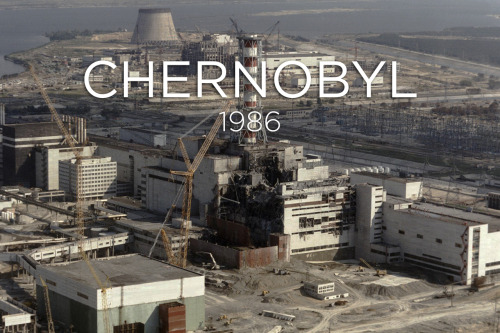
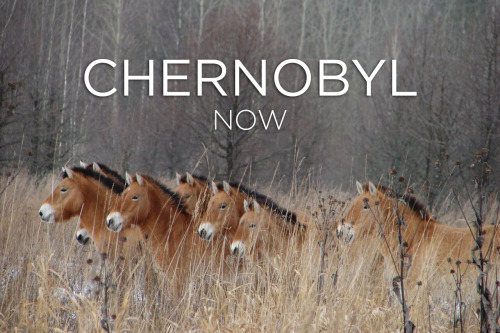
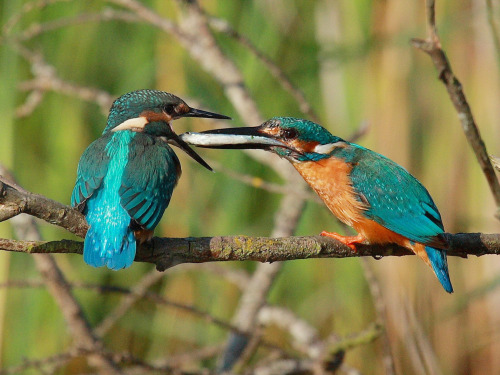
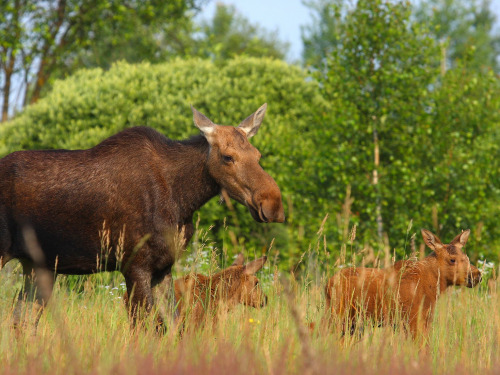
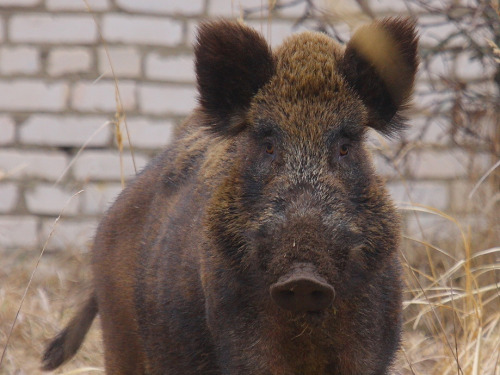
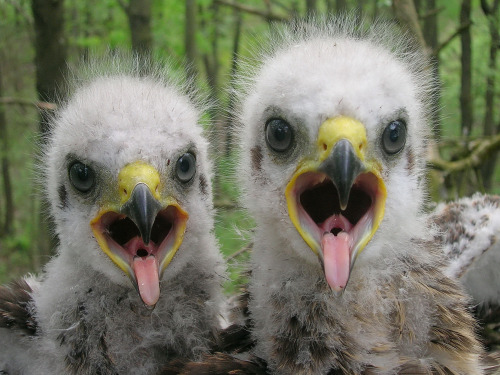
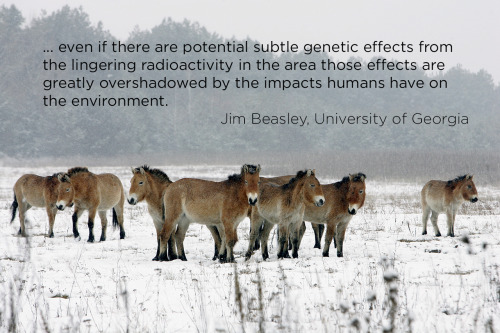
On April 26, 1986, a power surge caused an explosion at the Chernobyl Nuclear Power Plant near Pripyat, Ukraine. A large quantity of radioactive material was released.
On May 2, 1986, the Soviet government established a “Zone of Alienation” or “Exclusion Zone” around Chernobyl – a thousand square miles of “radioactive wasteland.” All humans were evacuated. The town of Pripyat was completely abandoned.
But the animals didn’t leave. And a new study, published this month in Current Biology, suggests they are doing fine. “None of our three hypotheses postulating radiation damage to large mammal populations at Chernobyl were supported by the empirical evidence,” says Jim Beasley, one of the researchers.
In fact, some of the populations have grown. These photos (mostly taken by Valeriy Yurko) come from the Belarusian side of the Exclusion Zone, and area called the Polessye State Radioecological Reserve. Kingfisher, elk, boar, baby spotted eagles, wild ponies, moose, rabbits, and wolves all make their home in the park. In some ways, human presence is worse for wildlife than a nuclear disaster.
Image credits:
1986 Chernobyl - ZUFAROV/AFP/Getty Images
Wildlife photos - Valeriy Yurko/Polessye State Radioecological Reserve
Ponies in winter - SERGEI SUPINSKY/AFP/Getty Images


A Merry-Go-Round That Turns The Power Of Play Into Electricity - Vlad Vilenski posted in Green, Electricity and Non Profit
Empower Playgrounds is a nonprofit that has come up with an intriguing solution: Harnessing the power of play, it provides merry-go-rounds to schools in Ghana that generate and store electricity as they are spun around, even while teeming with laughing and smiling kids.
Continue to fastcodesign.com
700,000-Year-Old Stone Tools Point to Mysterious Human Relative

Someone butchered a rhinoceros in the Philippines hundreds of thousands of years before modern humans arrived—but who?
Stone tools found in the Philippines predate the arrival of modern humans to the islands by roughly 600,000 years—but researchers aren’t sure who made them.
The eye-popping artifacts, unveiled on Wednesday in Nature, were abandoned on a river floodplain on the island of Luzon beside the butchered carcass of a rhinoceros. The ancient toolmakers were clearly angling for a meal. Two of the rhino’s limb bones are smashed in, as if someone was trying to harvest and eat the marrow inside. Cut marks left behind by stone blades crisscross the rhino’s ribs and ankle, a clear sign that someone used tools to strip the carcass of meat.
But the age of the remains makes them especially remarkable: The carved bones are most likely between 631,000 and 777,000 years old, with researchers’ best estimate coming in around 709,000 years old. Read more.
Big Data's religious faith denies the reality of failed promises, privacy Chernobyls

Maciej Ceglowski (previously) spoke to a O'Reilly’s Strata Big Data conference this month about the toxicity of data – the fact that data collected is likely to leak, and that data-leaks resemble nuclear leaks in that even the “dilute” data (metadata or lightly contaminated boiler suits and tools) are still deadly when enough of them leak out (I’ve been using this metaphor since 2008).
Ceglowski also raises a critical point: Big Data has not lived up to its promises, especially in life sciences, where we were promised that deep analysis of data would yield up new science that has spectacularly failed to materialise. What’s more, the factors that confound Big Data in life science are also at play in other domains, including the business domains where so much energy has been expended.
The key point is that people react to manipulation through Big Data: when you optimize a system to get people to behave in ways they don’t want to (to spend more money, to click links they aren’t interested in, etc) then people adapt to your interventions and regress to the mean.
Big Data’s advocates believe that all this can be solved with more Big Data. This requires them to deny the privacy harms from collecting (and, inevitably, leaking) our personal information, and to assert without evidence that they can massage the data so that it can’t be associated with the humans from whom it was extracted.
As Ceglowski puts it, ‘people speak of the “data driven organization” with the same religious fervor as a “Christ-centered life”.’
Read the rest










Breathtaking Images of Underwater Life Captured by Freediving Photographers Alex Voyer and Alex Roubaud

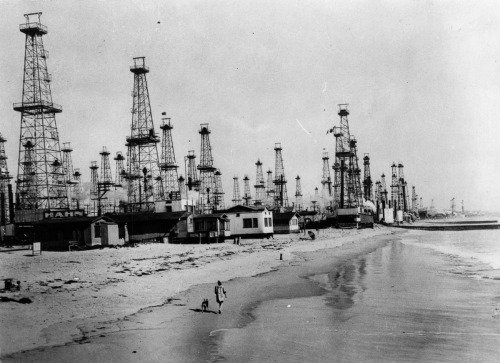








Drilling for oil on Venice Beach | Via
Native Americans first discovered oil in California, as it seeped to the surface of the earth. They used it as a lubricant and sealant for canoes. It was later used for similar purposes by Spanish colonizers.
As the state’s population boomed in the decades following the gold rush of 1849, there was a rapidly growing demand for petroleum.
Drilled in 1876, the first commercially successful oil well in California was Well No. 4 in the Pico Canyon Oilfield in the Santa Susana Mountains.
More discoveries followed, from the Los Angeles City Oil Field in 1892 to Huntington Beach in 1920 and Long Beach in 1921.
By 1920, California was producing 77 million barrels of oil a year, and vast stretches of the state were occupied by derricks, drilling rigs and refineries.
In places such as Venice, California (now known as Marina del Rey), oil derricks ran right up to the shore, mingling with residential neighborhoods and pristine beaches.
-
 nocturnityy liked this · 6 years ago
nocturnityy liked this · 6 years ago -
 rosy-avenger reblogged this · 9 years ago
rosy-avenger reblogged this · 9 years ago -
 bisexualbaker liked this · 9 years ago
bisexualbaker liked this · 9 years ago -
 theskidiot reblogged this · 9 years ago
theskidiot reblogged this · 9 years ago -
 iguanastevens reblogged this · 9 years ago
iguanastevens reblogged this · 9 years ago -
 corinneduyvis reblogged this · 9 years ago
corinneduyvis reblogged this · 9 years ago -
 iaspiretobeahermit reblogged this · 9 years ago
iaspiretobeahermit reblogged this · 9 years ago -
 hugetractsofland reblogged this · 9 years ago
hugetractsofland reblogged this · 9 years ago -
 bimbos-anonymous reblogged this · 9 years ago
bimbos-anonymous reblogged this · 9 years ago -
 bluerayofsunshine liked this · 9 years ago
bluerayofsunshine liked this · 9 years ago -
 shotsandasixstring reblogged this · 9 years ago
shotsandasixstring reblogged this · 9 years ago -
 beloved-lets-rattle-the-stars reblogged this · 9 years ago
beloved-lets-rattle-the-stars reblogged this · 9 years ago -
 beloved-lets-rattle-the-stars liked this · 9 years ago
beloved-lets-rattle-the-stars liked this · 9 years ago -
 smallercomfort liked this · 9 years ago
smallercomfort liked this · 9 years ago -
 awatermeloncookie liked this · 9 years ago
awatermeloncookie liked this · 9 years ago -
 archiveofidentityconstellations liked this · 9 years ago
archiveofidentityconstellations liked this · 9 years ago -
 ellie-tarts reblogged this · 9 years ago
ellie-tarts reblogged this · 9 years ago -
 ellie-tarts liked this · 9 years ago
ellie-tarts liked this · 9 years ago -
 meljane7 liked this · 9 years ago
meljane7 liked this · 9 years ago -
 velocibirb liked this · 9 years ago
velocibirb liked this · 9 years ago -
 keys-memes liked this · 9 years ago
keys-memes liked this · 9 years ago -
 kindlingnorah reblogged this · 9 years ago
kindlingnorah reblogged this · 9 years ago -
 kindlingnorah liked this · 9 years ago
kindlingnorah liked this · 9 years ago -
 insomniacs-keyboard liked this · 9 years ago
insomniacs-keyboard liked this · 9 years ago -
 insomniacs-keyboard reblogged this · 9 years ago
insomniacs-keyboard reblogged this · 9 years ago -
 captainlordauditor reblogged this · 9 years ago
captainlordauditor reblogged this · 9 years ago -
 captainlordauditor liked this · 9 years ago
captainlordauditor liked this · 9 years ago -
 dotmpotter reblogged this · 9 years ago
dotmpotter reblogged this · 9 years ago -
 urbanoceanix reblogged this · 9 years ago
urbanoceanix reblogged this · 9 years ago -
 hypnoticwitcheye liked this · 9 years ago
hypnoticwitcheye liked this · 9 years ago -
 jaymiejess reblogged this · 9 years ago
jaymiejess reblogged this · 9 years ago -
 melclarklengel liked this · 9 years ago
melclarklengel liked this · 9 years ago -
 mryaiir liked this · 9 years ago
mryaiir liked this · 9 years ago -
 swas reblogged this · 9 years ago
swas reblogged this · 9 years ago -
 kaiveran reblogged this · 9 years ago
kaiveran reblogged this · 9 years ago -
 alightinthedarkest liked this · 9 years ago
alightinthedarkest liked this · 9 years ago -
 azurelazures reblogged this · 9 years ago
azurelazures reblogged this · 9 years ago -
 azurelazures liked this · 9 years ago
azurelazures liked this · 9 years ago -
 nerdberger reblogged this · 9 years ago
nerdberger reblogged this · 9 years ago -
 kaiveran liked this · 9 years ago
kaiveran liked this · 9 years ago -
 itscalledfeminism liked this · 9 years ago
itscalledfeminism liked this · 9 years ago -
 oppa-homeless-style liked this · 9 years ago
oppa-homeless-style liked this · 9 years ago -
 callimeric reblogged this · 9 years ago
callimeric reblogged this · 9 years ago -
 foxfondue reblogged this · 9 years ago
foxfondue reblogged this · 9 years ago -
 foxfondue liked this · 9 years ago
foxfondue liked this · 9 years ago -
 minervafloofderg-migrating reblogged this · 9 years ago
minervafloofderg-migrating reblogged this · 9 years ago -
 heyguitar reblogged this · 9 years ago
heyguitar reblogged this · 9 years ago -
 heyguitar liked this · 9 years ago
heyguitar liked this · 9 years ago -
 chadicles reblogged this · 9 years ago
chadicles reblogged this · 9 years ago


